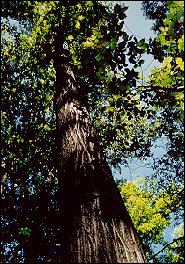Here at CLC Tree Services, we love trees. Native trees, big trees, little trees, deciduous or coniferous trees. Any kind of trees really. But we are saddened when we hear that some native trees species are at risk. Some of them are threatened by insects; the most recognizable right now of course being ash trees by the emerald ash borer. More than insects can threaten a tree though. Many species suffer due to habitat loss, either from deforestation, industrialization, or infringement of housing developments. There are also diseases, like chestnut blight or Dutch Elm disease which can almost wipe out a species.
The Ontario Ministry of Natural Resources monitors tree species and takes steps to protect our native trees when they are put at risk. One of the first steps is recognizing which species are in danger and noting how threatened they are. The distinctions are;
- Extirpated – native to Ontario and still exists in the world, but no longer found here
- Endangered – imminent danger of becoming extinct or extirpated
- Threatened – not endangered, but likely at risk if steps not taken
- Special Concern – not endangered or threatened, but at risk due to identified threats
Species at Risk in Ontario
- American Chestnut: listed as Endangered; at risk due to fungal disease – chestnut blight; only place to find it in Canada is Southwestern Ontario
- Blue Ash: listed as special concern; at risk historically due to over-harvesting and presently due to the emerald ash borer (green and white ash more favoured by EAB, but still a threat)
- Butternut: listed as endangered; at risk due to butternut canker
- Cherry Birch: listed as endangered; at risk due to habitat destruction; only stand in Canada located in Niagara peninsula
- Common Hoptree: listed as threatened; at risk due to habitat loss and more recently a twig-boring beetle; only place in Canada it is found is along Lake Erie shores
- Cucumber Tree: listed as endangered; at risk due to deforestation and poor reproduction; it is the only native species of Magnolia in Canada and can only be found in Southwestern Ontario (occurs south of the border)
- Dwarf Hackberry: listed as threatened; at risk due to habitat loss and bark beetle infestations in some years
-
Eastern Flowering Dogwood: listed as endangered; at risk due to dogwood anthracnose (fungus) and habitat loss and fragmentation
- Kentucky Coffeetree: listed as threatened; at risk due to lack of suitable habitat and poor seed production; in Canada it is only found in Southwestern Ontario; it has the largest leaves of any native tree in Canada
- Red Mulberry: listed as endangered; at risk due to loss of habitat and competition with white mulberry; in Canada it is only found in the Carolinian zone in Southwestern Ontario
- Shumard Oak: listed as special concern; at risk due to loss of habitat
For more information about these species, what is being done to protect them, and how you can help visit the Ontario Ministry of Natural Resources website and see the Government of Canada Species at Risk Public Registry. With our help, we can make a difference for these species and hopefully see them flourish again in the future.





